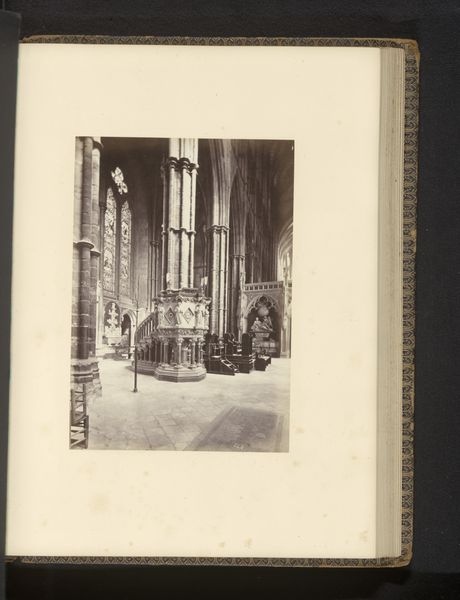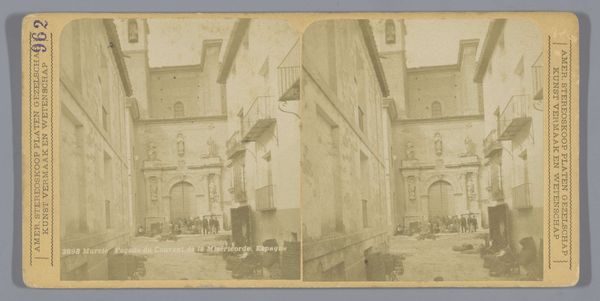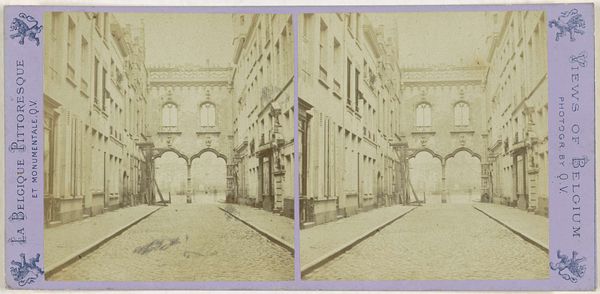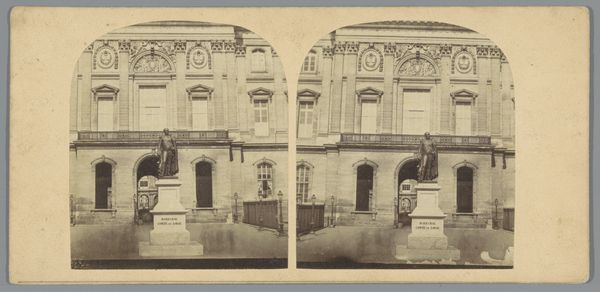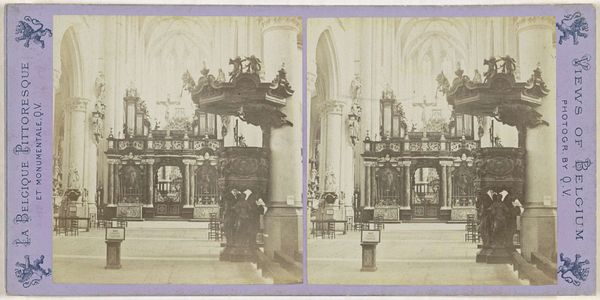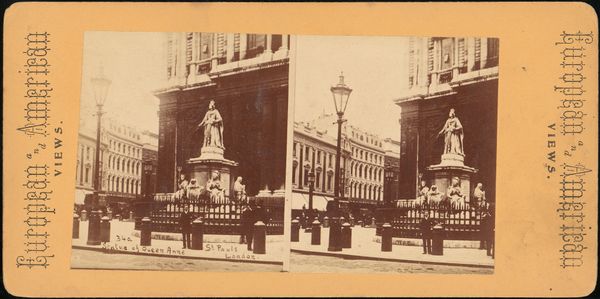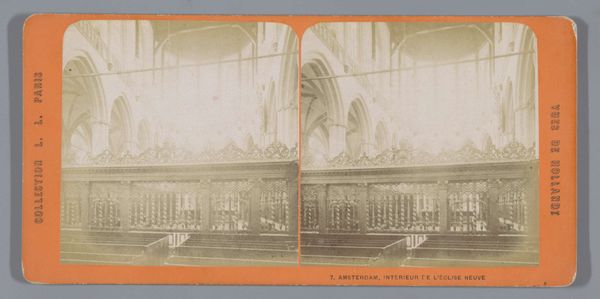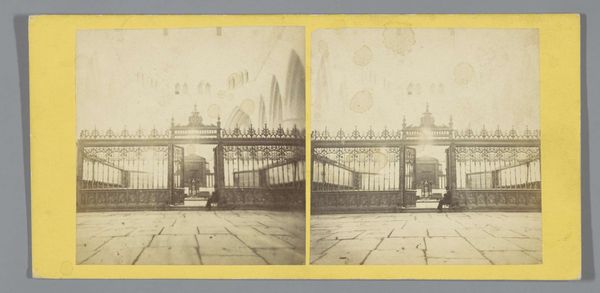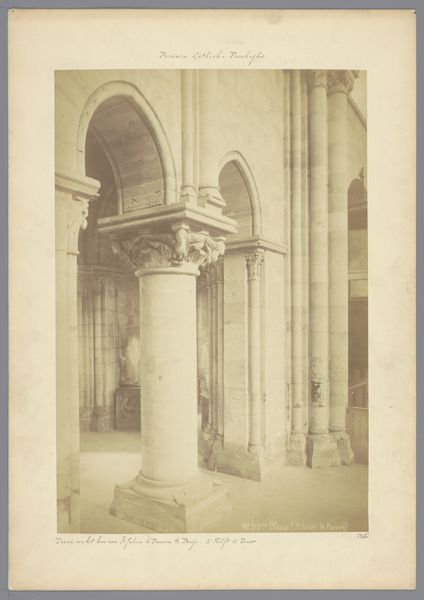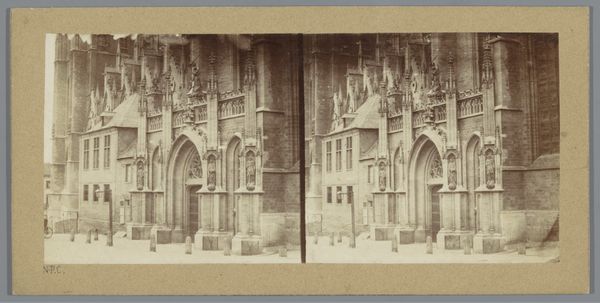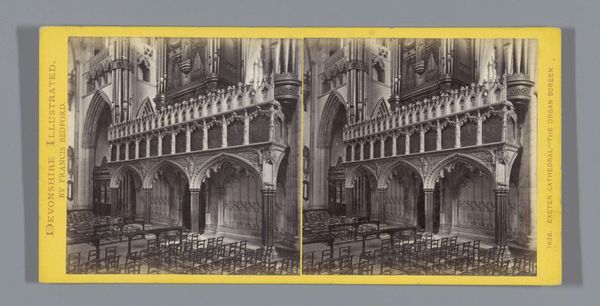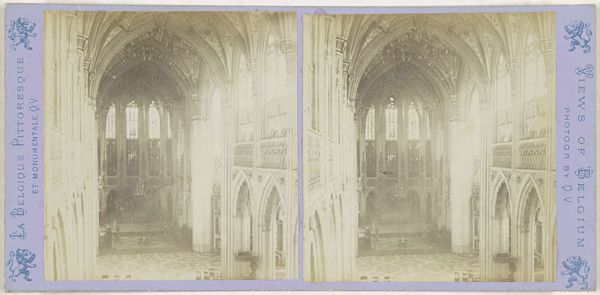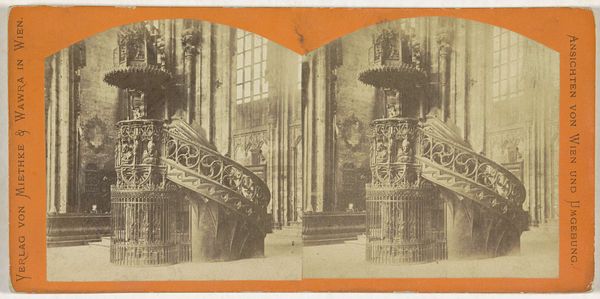
Gezicht op de put van Quinten Matsijs op de Handschoenmarkt in Antwerpen 1866 - 1870
0:00
0:00
photography
#
photography
#
cityscape
#
realism
Dimensions: height 86 mm, width 175 mm
Copyright: Rijks Museum: Open Domain
Editor: So, this is "View of the well of Quinten Matsijs on the Handschoenmarkt in Antwerp" by Jules Hippolyte Quévat, dating from 1866 to 1870. It's a photograph, a cityscape in subdued sepia tones. What stands out to me is how it captures a specific location, almost like a document of a place in time. What catches your eye? Curator: I see the means of production at play. This isn't just about the architecture; it's about the industrialization of image-making. Photography allowed for mass reproduction, democratizing access to imagery of places like Antwerp. How does the act of photographing, the choices of angle and subject, affect our understanding of the urban experience here? Editor: That's interesting! I was so focused on the architecture and historical feel. I hadn't really considered the implications of photography itself as a means of production, or its impact. Curator: Think about the social context. Why photograph this well? Was it about civic pride, tourism, or perhaps a commentary on the changing urban landscape and material culture? Who was consuming these images, and how did that shape the meaning of the photograph? Editor: I suppose people would want to see the images from faraway places in order to compare with their own society. Sort of like tourism. Also, what’s the story behind the choice of materials? Was the photograph specifically to highlight them? Curator: Precisely! We have to think of these things, and, indeed, yes: Photography as a reproducible object made possible consumption through tourism. Note also the social divisions and artistic hierarchies implied, between say, architecture and photography at that time. What sort of labor was involved? Editor: Okay, I'm starting to get it. It’s more than just seeing the building itself. I now see it captures the labor involved and gives an insight into a changing society. I think I have a more critical eye for evaluating the history of its making, from labor, consumption, to materials. Curator: Exactly! By examining the process, materials, and the socio-economic context surrounding the image's creation and distribution, we get a far richer understanding of its meaning and significance.
Comments
No comments
Be the first to comment and join the conversation on the ultimate creative platform.
